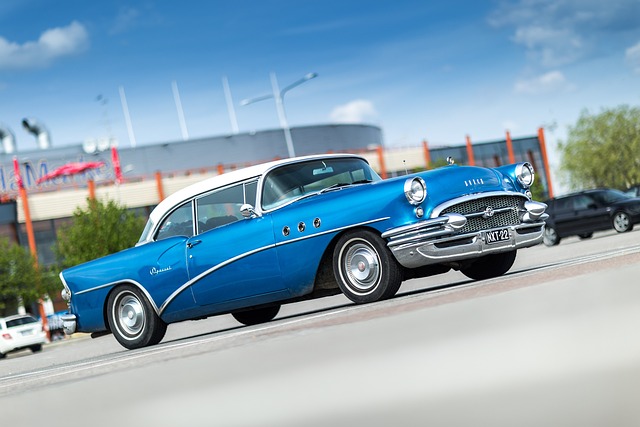Looking to register your car in California? This comprehensive guide walks you through the entire process, from understanding the registration requirements to gathering all necessary documents. We’ll take you step by step through visiting the DMV, including how to verify your Vehicle Identification Number (VIN) using trusted tools. Learn what tasks await after registration and discover key considerations for a smooth experience with California’s DMV.
- Understanding the Registration Process
- Gathering Necessary Documents
- Visiting the DMV: Step-by-Step Guide
- Verifying Vehicle Identification Number (VIN)
- Post-Registration Tasks and Considerations
Understanding the Registration Process

Understanding the Registration Process in California
Registering a car in California involves several steps that can seem daunting at first, but with the right preparation and knowledge, it becomes a straightforward process. The first step is to ensure your vehicle meets all safety and emissions standards set by the state. This often requires passing a smog test, which can be done at certified stations using a Vehicle Identification Number (VIN) verifier. The DMV (Department of Motor Vehicles) in California facilitates the registration process, collecting necessary documents and fees from owners.
After your vehicle passes the required inspections, including a VIN inspection using a mobile vin verifier or a stationary one at a smog check facility, you’ll need to gather essential documents like proof of insurance, owner’s certification, and payment for registration fees. These can typically be submitted online or in-person at a local DMV office. Once all requirements are met, the DMV will issue your vehicle a California registration certificate, officially registering your car within the state.
Gathering Necessary Documents

Before registering your car in California, you’ll need to gather several important documents and conduct a crucial step—a Vehicle Identification Number (VIN) inspection. Start by acquiring the essential paperwork, such as the title, registration certificate, and proof of insurance. Additionally, you’ll require a valid driver’s license or state-issued ID card. If you’re purchasing a used vehicle, ensure you have the previous owner’s signed bill of sale, which includes their contact information.
For a seamless process, consider using a mobile VIN verifier to check your car’s history remotely. This service allows you to obtain a detailed report on the vehicle’s past, including any accidents or outstanding issues, by simply providing the unique VIN number. Alternatively, you can visit a local California Department of Motor Vehicles (DMV) office, where they will conduct a vin inspection for you as part of the registration process.
Visiting the DMV: Step-by-Step Guide

Visiting the DMV for car registration involves a straightforward process that begins with preparation. First, gather all necessary documents, including your vehicle’s title, proof of insurance, and valid driver’s license. Additionally, ensure you have the Vehicle Identification Number (VIN) verifier ready, which can be easily obtained through a simple online request or by visiting select DMV locations offering mobile VIN verification services.
Upon arrival at the DMV, locate the dedicated counter for registration and present your documents. An official will verify your information and perform a VIN inspection to ensure the vehicle’s details match the provided records. If everything aligns, they’ll guide you through the payment process for registration fees. For convenience, many DMV branches now offer mobile VIN verifier services, allowing you to complete this step efficiently before finalizing your car’s registration.
Verifying Vehicle Identification Number (VIN)

To begin the registration process for your car in California, the first step is to verify the Vehicle Identification Number (VIN). This unique 17-character code is essential for identifying your vehicle and can be found on the dashboard or engine compartment. A reliable way to check the VIN is by using a DMV VIN verifier, which ensures the accuracy of the number. Many online tools and mobile apps, including mobile vin inspection and mobile vin verification services, make this process quick and convenient.
By cross-referencing the VIN with official records, you can ensure that your vehicle is authentic and hasn’t been reported stolen or has any outstanding issues. This step is crucial as it helps prevent fraud and ensures a smooth registration experience for both new and used car owners.
Post-Registration Tasks and Considerations

After successfully registering your vehicle with the DMV, there are several important post-registration tasks to complete. One crucial step is obtaining a Vehicle Identification Number (VIN) verification, which can be done through a reliable dmv vin verifier. This process ensures that the VIN on your vehicle matches the one recorded in the state’s database, preventing fraud and ensuring compliance.
Additionally, consider utilizing mobile vin verification or mobile vin inspection services for added convenience. These services allow you to complete the VIN verification from the comfort of your home or even while you’re on the go. By leveraging technology like these mobile apps, you can streamline post-registration procedures and stay ahead in maintaining your vehicle’s legal status.
Registering a car in California involves understanding the process, gathering essential documents, and visiting the DMV. By following these steps and verifying your Vehicle Identification Number (VIN) using a reliable dmv vin verifier, you can ensure a smooth registration experience. After registration, remember to complete post-registration tasks for legal compliance and peace of mind.
